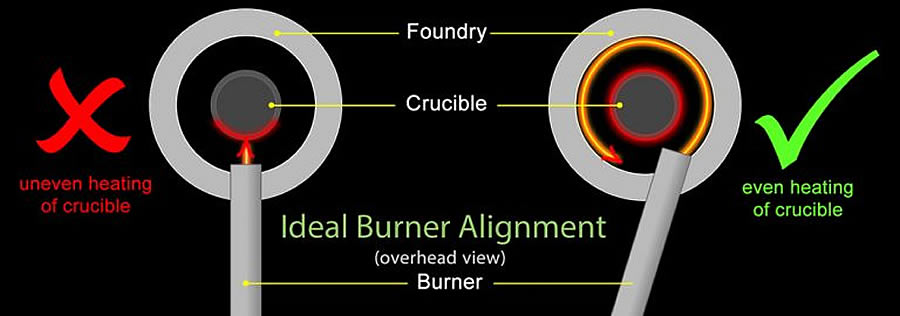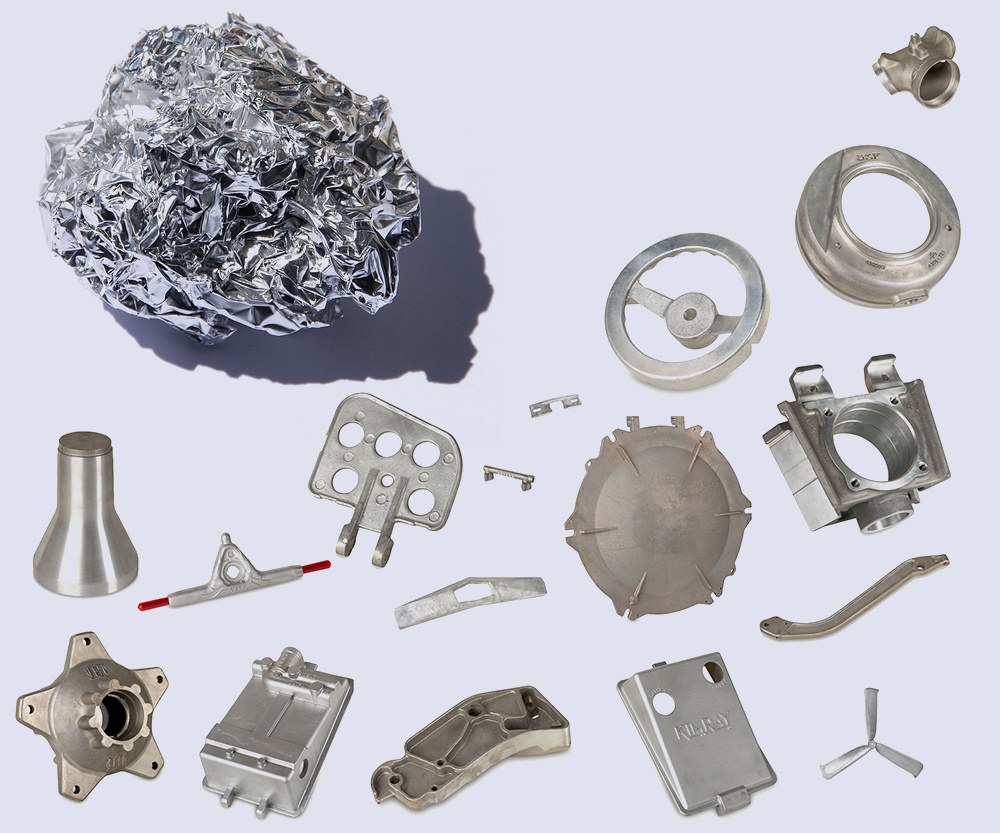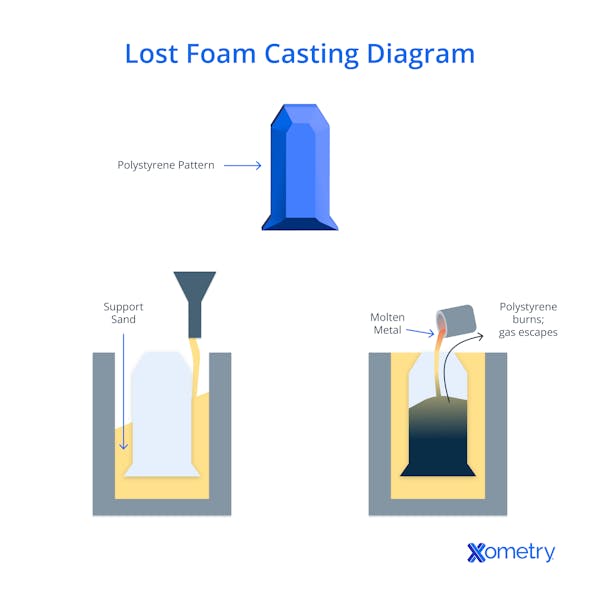A guide to Aluminum Foundry Wisconsin in metal casting
Wiki Article
A Comprehensive Guide to the Techniques Utilized in Aluminum Foundry Workflow
Aluminum Foundry operations utilize different casting techniques, each with distinct procedures and applications. Comprehending these techniques is crucial for maximizing production and attaining wanted material residential or commercial properties. From sand spreading to die casting, the selections readily available can considerably influence efficiency and price. As modern technology breakthroughs, so also do these techniques, prompting a closer exam of their restrictions and benefits. The effects of these developments necessitate further expedition.Summary of Aluminum Spreading Techniques
Aluminum spreading techniques include a variety of techniques used to shape liquified Aluminum into wanted forms. These strategies are pivotal in the manufacturing and design industries, providing flexibility and efficiency. Major techniques include die casting, which employs high-pressure to inject Aluminum into molds for accuracy components, and gravity casting, where molten Aluminum is put right into molds drunk of gravity, permitting larger, less complex forms. Financial investment spreading, another method, includes creating a wax pattern coated in ceramic, offering high dimensional accuracy for detailed designs. Furthermore, irreversible mold spreading utilizes multiple-use molds, enhancing manufacturing effectiveness and lowering waste. Each technique satisfies details applications, balancing variables such as cost, manufacturing quantity, and product buildings. As industries develop, developments in these casting techniques remain to improve the quality and performance of Aluminum components, placing them as crucial processes within modern-day production.Sand Spreading: Process and Applications
Sand casting is a widely used method in the Foundry market, understood for its simpleness and flexibility. Aluminum Foundry. This procedure involves developing a mold and mildew from a mixture of sand and a bonding agent, commonly clay. The mold and mildew is formed around a pattern, which is a reproduction of the wanted last product. When the mold and mildew is ready, molten Aluminum is put right into the cavity, enabling it to solidify right into the wanted shapeOne of the primary advantages of sand spreading is its ability to generate large components and complex geometries, making it ideal for different applications, including automobile parts, equipment components, and attractive things. Furthermore, sand spreading can fit various Aluminum alloys, improving its flexibility. The process is affordable for low to medium manufacturing runs, as it does not call for expensive tooling. On the whole, sand spreading continues to be a fundamental method in Aluminum Foundry operations as a result of its efficiency in meeting diverse production requirements.
Die Spreading: Advantages and Limitations
While die spreading is frequently contrasted to sand casting, it supplies unique advantages and restrictions that make it ideal for specific applications in the Aluminum Foundry sector. One considerable advantage of die spreading is its capacity to produce complicated forms with high dimensional accuracy and excellent surface coating. This process is specifically valuable for mass manufacturing, as it enables faster cycle times and lowered labor expenses. In addition, die casting lessens product waste, boosting total efficiency.However, pass away spreading additionally has constraints. The preliminary tooling expenses are fairly high, making it much less practical for tiny manufacturing runs. In addition, the procedure is ideal matched for steels with reduced melting factors, which can limit material choices. Pass away spreading is additionally limited pertaining to the maximum dimension of the components generated, as bigger elements may call for different approaches. Stabilizing these aspects is vital for determining the suitable application of die casting in the Aluminum Foundry field.
Financial Investment Spreading: Accuracy and Detail
Investment casting is an extremely exact production procedure that enables elaborate designs and fine details in Aluminum parts. This technique uses considerable advantages, consisting of enhanced dimensional precision and minimized machining requirements. Its applications extend different sectors, highlighting its versatility and performance in creating complex components.Process Summary
The investment casting process is renowned for its capacity to generate detailed shapes and high-precision elements. This technique begins with producing a wax pattern, which is after that covered with a ceramic shell. When the covering solidifies, the wax is dissolved, leaving an accurate tooth cavity for the molten steel. The Aluminum is poured right into this tooth cavity, recording the fine details of the initial pattern. After cooling, the ceramic covering is escaped, exposing the cast part. Any kind of needed completing work, such as machining or surface area treatment, is carried out to achieve the desired specs. This procedure is particularly helpful for complex geometries that are tough to achieve with traditional casting strategies, guaranteeing both top quality and accuracy in the end product.Advantages of Precision
Accuracy in investment spreading provides significant benefits, making it a preferred option for making intricate components. This method makes it possible for the production of intricate forms with limited tolerances, lowering the need for considerable machining and reducing material waste. The capacity to accomplish high dimensional precision equates to an exceptional fit and coating, enhancing the general quality of the end product. Additionally, investment spreading permits for the consolidation of great details, which is crucial for elements calling for elaborate styles. The process additionally sustains using numerous Aluminum alloys, better increasing its applicability. Generally, the accuracy supplied by investment casting not just boosts the functional and visual attributes of elements yet also contributes to improved performance in manufacturing cycles.Applications in Market
While numerous producing processes exist, financial investment spreading attracts attention for its flexibility throughout various industries, particularly in sectors demanding high precision and thorough parts. This casting approach is extensively utilized in aerospace, auto, and clinical areas, where tight resistances and complex layouts are essential. Aerospace elements benefit from investment spreading's capability to generate intricate geometries that minimize weight without compromising structural honesty. The automotive industry utilizes this technique to produce engine components that require longevity and accuracy. In the clinical industry, investment casting enables the manufacturing of medical instruments and implants that have to satisfy rigid top quality standards. On the whole, investment spreading greatly improves product efficiency and reliability, making it an indispensable technique in modern production applications.Comparison of Casting Methods
 The contrast of casting techniques exposes unique advantages and applications across various techniques - Aluminum Aluminum Foundry Wisconsin Foundry. Sand casting is typically celebrated for its flexibility and cost-effectiveness, while die casting is identified for its efficiency and accuracy in generating high volumes. Investment spreading, formerly reviewed, showcases its special capacity to create elaborate styles, better emphasizing the diverse capacities of each approach in Aluminum Foundry operations
The contrast of casting techniques exposes unique advantages and applications across various techniques - Aluminum Aluminum Foundry Wisconsin Foundry. Sand casting is typically celebrated for its flexibility and cost-effectiveness, while die casting is identified for its efficiency and accuracy in generating high volumes. Investment spreading, formerly reviewed, showcases its special capacity to create elaborate styles, better emphasizing the diverse capacities of each approach in Aluminum Foundry operationsSand Casting Advantages
Sand casting uses a number of advantages when contrasted to various other casting approaches, making it a favored option in numerous production applications. One of the key advantages is its affordable, as the products called for, such as sand and steel, are readily offered and affordable. In addition, sand spreading enables for greater style adaptability, making it possible for the production of complex forms and large parts that may be testing to achieve with various other methods. The process likewise suits a variety of metal alloys, including Aluminum, enhancing its flexibility. Sand molds can be easily fixed or changed for subsequent casts, making it efficient for both small and huge production runs. On the whole, these advantages add to sand casting's popularity in the Foundry sector.Pass Away Casting Techniques
Pass away spreading techniques stand out as a highly efficient technique for producing metal parts, particularly when compared to conventional spreading approaches like sand casting. This process includes requiring liquified Aluminum right into a mold and mildew under high pressure, leading to accurate dimensions and a smooth surface area coating. Unlike sand spreading, which requires substantial finishing job, pass away casting decreases post-production handling, improving general productivity. Furthermore, die spreading can fit complex geometries, enabling detailed layouts that would certainly be testing to accomplish via other methods. The speed of production is one more benefit; pass away casting can generate huge quantities of components in a much shorter duration. Generally, the mix of design, precision, and efficiency versatility makes pass away casting a recommended selection in contemporary Aluminum Foundry procedures.Financial Investment Casting Applications
Investment casting, commonly referred to as lost-wax spreading, provides distinctive advantages over various other casting methods, specifically relative to accuracy and surface finish. This method permits the development of complex shapes and fine information that are challenging to accomplish with sand or die casting. Additionally, investment casting generates components with remarkable dimensional precision, lowering the need for considerable machining. Its adaptability makes it appropriate for different industries, consisting of aerospace, auto, and medical tools, where top notch elements are important. Compared to pass away spreading, which can be limited by mold complexity, financial investment casting masters producing complex geometries without endangering architectural stability. The option of investment spreading ends up being increasingly desirable for applications demanding high performance and integrity.
Quality Assurance in Aluminum Foundry Procedures
Exactly how can Aluminum foundries ensure the best quality in their items? Implementing strenuous quality assurance actions is essential. Shops usually begin by establishing clear specs for the Aluminum alloys used, ensuring they meet sector standards. Continual monitoring throughout the melting and pouring procedures assists determine any type of discrepancies from wanted chemical make-ups.In addition, visual assessments and non-destructive screening approaches, such as ultrasonic or X-ray evaluations, are typically utilized to discover internal defects or inconsistencies in spreadings. In addition, analytical process control techniques track manufacturing information, allowing for very early identification of possible problems.
Normal training and qualification of employees in quality control methods are crucial for keeping high criteria. Ultimately, implementing comments loops from clients can assist factories fine-tune their procedures and boost item top quality. By sticking to these practices, Aluminum factories can constantly deliver high-quality items that surpass or meet client assumptions.
Future Trends in Aluminum Casting Innovation
Advancements in Aluminum casting technology are poised to improve the industry landscape, building upon recognized quality assurance practices. Developments such as additive production and smart Foundry services are arising, making it possible for enhanced style versatility and decreased waste. The assimilation of expert system and artificial intelligence in process surveillance enables real-time modifications, boosting efficiency and product quality.Sustainability remains an essential focus, with an emphasis on reusing scrap Aluminum and decreasing power usage. Advanced alloy formulations are being established to optimize efficiency while reducing ecological impact. The fostering of automated systems, including robotics for managing and pouring, assures to enhance office safety and precision.
Electronic twins are acquiring traction, allowing for digital simulations that assist in much better decision-making and predictive upkeep. As these patterns advance, they will likely develop an extra reliable, sustainable, and technologically progressed Aluminum spreading industry, establishing new standards for top quality and performance.
Often Asked Questions
What Safety and security Measures Should Be Taken in Aluminum Foundry Operations?
In Aluminum Foundry operations, vital security steps consist of personal protective equipment, correct ventilation, regular training, danger assessments, emergency situation preparedness, and adherence to methods to reduce threats connected with liquified metal and hefty machinery.Just How Is Recycled Aluminum Utilized in Foundry Processes?
Recycled Aluminum is commonly made use of in Foundry processes to decrease ecological effect and manufacturing costs. It goes through melting and refining, allowing manufacturers to produce top quality items while conserving power and lessening waste in the Aluminum lifecycle.What Tools Is Vital for Aluminum Casting?
Essential devices for Aluminum casting includes furnaces for melting, mold and mildews for shaping, pouring ladles, cooling systems, and completing tools. Each component plays a crucial function in ensuring the effectiveness and top quality of the casting procedure.How Do Environmental Laws Effect Aluminum Foundries?
Ecological regulations significantly affect Aluminum shops by enforcing restrictions on emissions and waste monitoring. Conformity needs financial investment in cleaner modern technologies, which can increase functional expenses but inevitably promotes sustainability and reduces the ecological footprint of the market.
What Are Common Flaws in Aluminum Castings and Their Solutions?
Usual flaws in Aluminum spreadings include shrinkage, porosity, and surface blemishes. Solutions include enhancing melt top quality, managing air conditioning prices, and employing appropriate mold layout, guaranteeing far better honesty and performance of the last cast items. Major strategies consist of die casting, which uses high-pressure to inject Aluminum right into mold and mildews for accuracy components, and gravity spreading, where liquified Aluminum is put into molds under the influence of gravity, enabling for larger, much less complicated forms. While die spreading is usually contrasted to sand casting, it offers distinct advantages and constraints that make it suitable for particular applications in the Aluminum Foundry sector. Sand spreading is typically commemorated for its adaptability and cost-effectiveness, while die casting is acknowledged for its effectiveness and accuracy in generating high volumes. Die casting methods stand out as a very effective technique for generating steel parts, especially when compared to traditional casting techniques like sand casting. Contrasted to pass away casting, which can be limited by mold and mildew intricacy, financial investment casting excels in creating complex geometries without compromising structural stability.
Major strategies consist of die casting, which uses high-pressure to inject Aluminum right into mold and mildews for accuracy components, and gravity spreading, where liquified Aluminum is put into molds under the influence of gravity, enabling for larger, much less complicated forms. While die spreading is usually contrasted to sand casting, it offers distinct advantages and constraints that make it suitable for particular applications in the Aluminum Foundry sector. Sand spreading is typically commemorated for its adaptability and cost-effectiveness, while die casting is acknowledged for its effectiveness and accuracy in generating high volumes. Die casting methods stand out as a very effective technique for generating steel parts, especially when compared to traditional casting techniques like sand casting. Contrasted to pass away casting, which can be limited by mold and mildew intricacy, financial investment casting excels in creating complex geometries without compromising structural stability.Report this wiki page